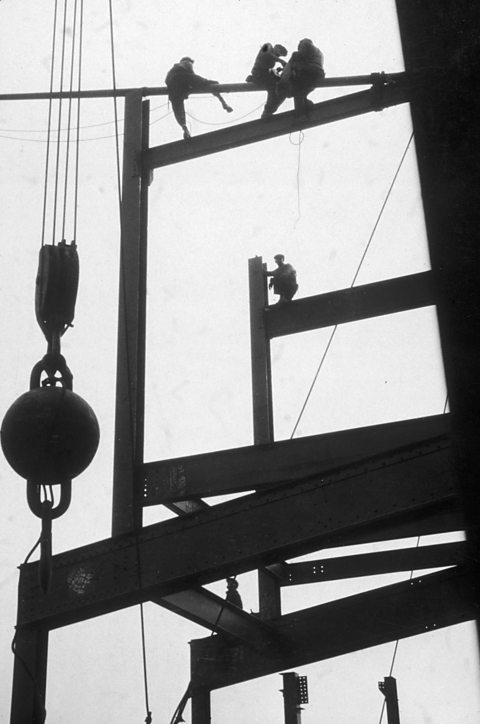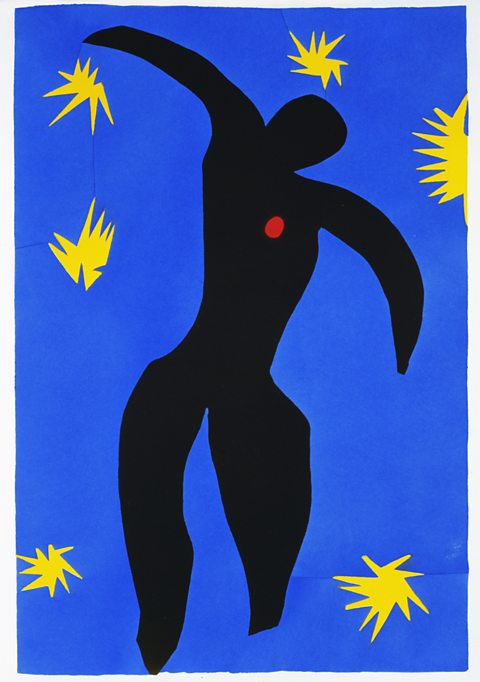Positive and negative shapes
All shapes can be described as either positive or negative:
- Positive shapes are the shapes of actual objects.
- Negative shapes are the areas between these objects.
The way positive and negative shapes act together creates the atmosphere of a composition.
Artist will sometimes use the outline of a shape, filled in with flat colour to represent that object as a whole. This is known as a silhouette.

This Dwight Franklin photograph shows the Empire State Building under construction.
The steel frame, the workers and the crane act as positive shapes. They are almost in silhouette and this unites them through colour.
There is stark contrast with the white negative shapes created around the building’s frame. These negative shapes take up the majority of the composition. This highlights how thin the structure is and makes the small human figures seem exposed and precariously positioned.


Henri Matisse played with ideas of positive and negative shapes with his cut-out works. With Icarus, is the black figure a positive shape against a blue background? Or is the dominant blue colour a positive shape from which a figure has been removed?
